A cooling tower is a heat-removing device that extracts excess heat from the system into the atmosphere and cools the machinery. They are extensively used in industries and buildings to cool down the inner atmosphere and are highly preferable due to their efficiency and functionality.
An international industrial cooling tower works on the foundations of removing extra heat from water by evaporating a small amount of water that is redistributed through the unit.
Most industries can’t run successfully without cooling tower units, as they ensure efficient heat exchange and cooling down industries’ equipment by extracting excess heat.
This detailed article will discuss cooling towers, their purpose and importance, the types of cooling towers, how to detect flaws, and more.
Table of Contents
What is the Main Purpose of Cooling Towers?
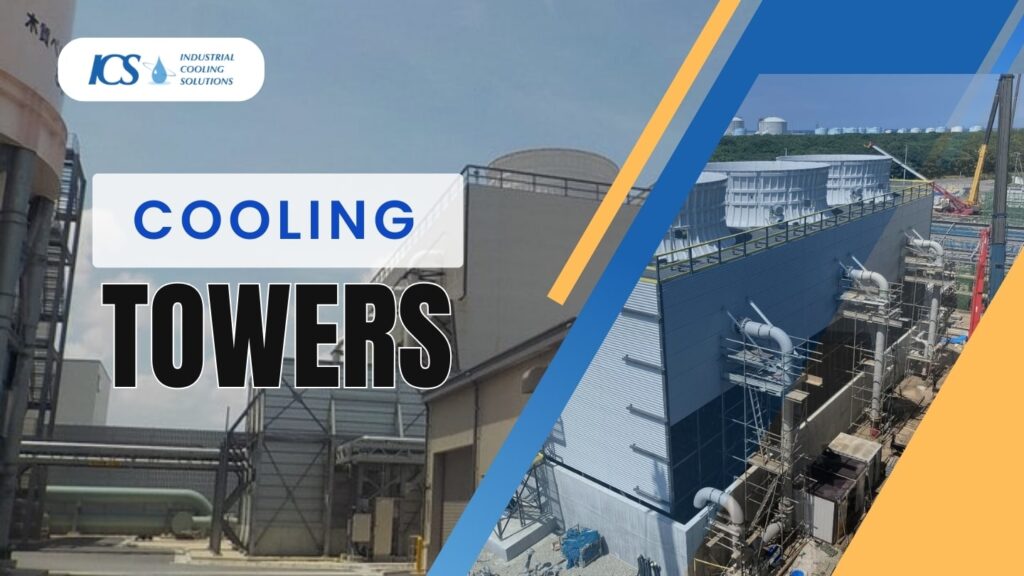
Water cooling towers are needed to cool the water, remove excess harmful heat, eject large building heat directly into the atmosphere, and return colder water to the chiller.
A water cooling tower receives hot water from a chiller. This hot water is also called condenser water. The chiller is placed at a lower level, like in a vault or basement. Its primary function is to cool down the warm water so it can return to the chiller to receive more heat, and the process is carried on.
International cooling tower processes can produce excessive heat in the hot water form that suddenly needs to be chilled out. The hot water cooling towers remove the extra heat and cool down.
In an industrial cooling tower, overheated water from processes flows through the cooling towers, redistributes, and comes in contact with cool air. As the water falls, heat is extracted from hot water through the evaporation process.
This process is known as evaporative cooling. The chill water then re-up to the air process to cool down the equipment, and this efficient cooling cycle repeats continuously again and again.
Water is passed through nozzles when the hot condenser enters the cooling tower, which sprays the water into tiny droplets over the fill, ultimately enhancing the water surface area and allowing them for effective heat loss via vast evaporation.
The fan, placed at the top of the cooling tower, conducts air from the base, moves it upward, and circulates all the directions of the warm condenser water. The air will carry all the extra heat through water evaporation from the industrial cooling tower and into the atmosphere.
Key Components of Cooling Towers
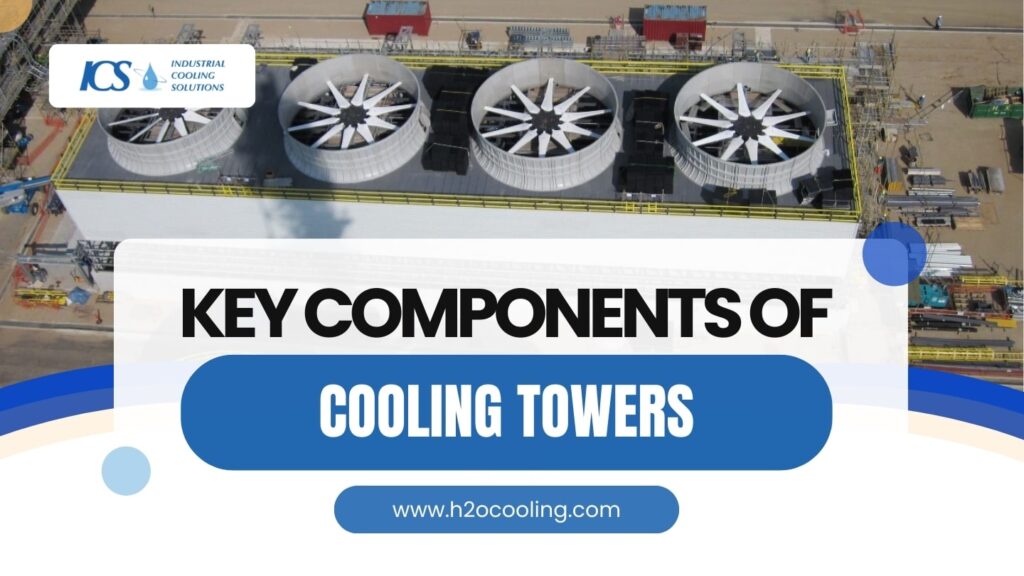
Fill Material:
The fill material in cooling towers provides an excellent surface area to spread the hot water effectively. Ultimately it will promote and enhance the air-water contact for efficient and maximum cooling.
Spray Nozzles:
Spray nozzles work as a water distributor in cooling towers and spray over the fill material to ensure consistent and long-lasting cooling. Apart from plastic materials, other materials like PVC, ABS, polypropylene, and glass-filled nylon are also used for spray.
Fans:
In international cooling towers, fans are placed at the top of towers; they draw and push the air through the system and help in the heat-losing system.
Applications of Cooling Towers in Different Industries
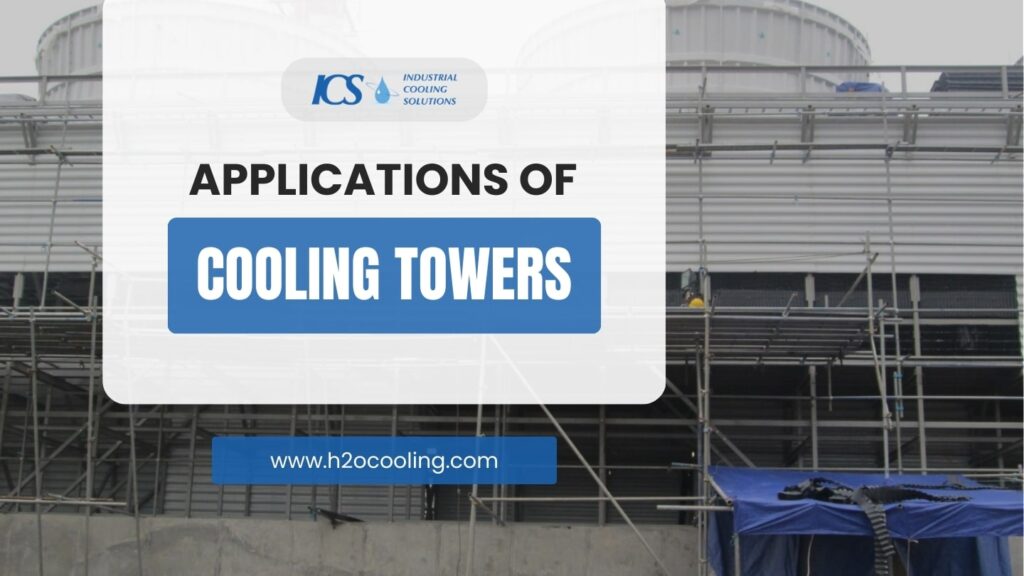
Power Generation plants:
In power generation plants, cooling towers are highly used because of their efficiency and usefulness, and steam power plants use them even more. When the heat is converted into mechanical energy, it is challenging to convert all the heat into mechanical work, and the cooling tower is used here to convert it entirely.
Heating and air conditioning:
These cooling towers are also used in HVAC systems in residential or commercial buildings. These cooling systems absorb all the extra heat from people or other electrical equipment like computers and A.C.. They are transferred to the cooling tower, where it is removed from the atmosphere.
Industries:
In factories like sugar, clothing, Petrochemical, and oil and gas refineries, and cooling towers is vital to keep an eye on temperature. International cooling towers also help maintain the operational longevity of industrial machines by preventing overheating and wear and tear.
Cooling Towers in Data Centers
Data centers are the ultimate supporters of IT infrastructure in the digital age. These centers house continuously producing substantial heat. Cooling mechanisms help keep their environment cool and make sure all the functions operate correctly. The data center can blackout due to overheating can be costly and disruptive to maintain and repair the ooling towers.
Types of Cooling Towers
Various cooling towers are based on the airflow generation available for extracting excess, and some are as follows.
Mechanical Draft Cooling Towers:
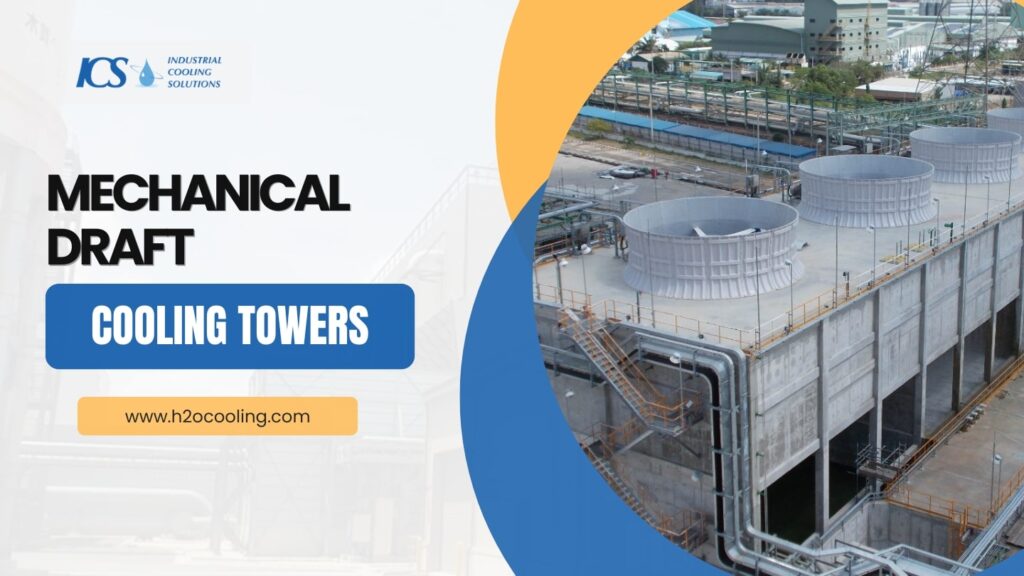
The mechanical draft towers used single or multiple fans to produce airflow through the tower. They have air forced by a standard fan that spreads air through the industry or building. They are preferred over natural draft cooling because of their functionality.
Natural Draft Cooling Towers:
Natural draft cooling towers don’t use mechanical devices t like fans to create airflow. They work on the natural air movement to cool down the water. They are not costly, but they must be installed outdoors by analyzing the climate conditions. These tall cooling towers generally have a hyperbolic shape to get proper airflow.
Forced Draft Cooling Towers:
In forced draft cooling towers, fans pull the air into the cooling tower and are installed at the bottom and side of the cooling tower. It is similar to the Induced Draft cooling towers. Its performance is always stable and can be utilized in indoor applications where high static pressure must be treated.
Induced Draft Colling Towers:
Fans are placed at the top in induced draft cooling towers to promote hot air out. Drift eliminators are used to evade the entrapment of water drops in the air leaving the stream.
Crossflow & Counterflow Cooling Towers:
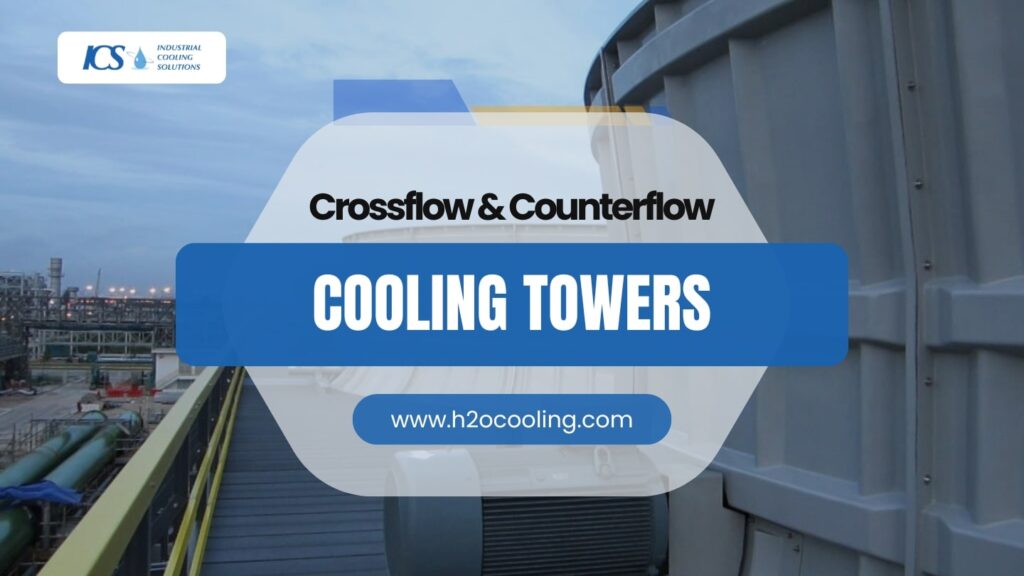
As the name suggests, in crossflow cooling towers, water falls vertically, and air swap heat passes through the material and fills the horizontal direction. Waterfalls vertically in a counterflow-type cooling tower, and air flows through the fills vertically upward.
Water Conservation Tips
Cooling towers consume large amounts of water, particularly in wet cooling systems. However, several methods can be employed to reduce water usage, such as:
Blowdown Reduction
Blowdown refers to removing water with high concentrations of dissolved solids from the system. Reducing blowdown frequency and reusing water wherever possible helps conserve water.
Water Treatment
By treating the water before it enters the cooling tower, operators can reduce scaling and corrosion, which allows for longer cycles between water changes, thereby saving water.
How to Troubleshoot early for minimal loss?
Analyzing and verifying early troubleshooting of these towers can save time and money. Here are some early warning signs that can create severe damage to cooling towers:
Engine Noises
Unusual high and weird engine voices can signal ultimate problems in its machinery. Gurgling and bubbling high-pitch sounds from this engine are clear signs of air holes in the cooling system, while unbearable grinding noises are caused by the damaged water pump.
Huge Electricity Bills
If you have more electricity bills than usual, it means that the cooling tower is consuming more energy than required, it’s a clear indication that it is being used for inefficient cooling due to rusting, scaling, foaming, biological growth, or other mechanical failure.
Clear Leakage from Equipment
Examine the area under your machinery for any bright-colored fluid spills. Damage to the water pump or a faulty radiator could result in coolant leakage. Another sign of a leak is a sudden decrease in coolant level. Engine overheating can occur from inadequate heat removal from cooling towers due to low coolant levels.
Common Cooling Towers Issues that Need Urgent Repair
Over time and continuous use, cooling towers can face many problems that can cause
severe damage. Some of the most common issues are as follows:
Corrosion:
When metals contact to water under air, there is high risk of corrosion occured. In international Cooling towers, corrosion moslty occurs at at metal material due of the frequent use of water chemical treatment and other electrolytes due to evaporation. It can cause severe damage to the cooling towers, such as leaks, debris, and equipment damage.
Scaling:
Building up of minerals from the water used in cooling towers is called scalling. When these minerals inorporated with water, they suddenly forms plate-like pieces. It can block and cause hindrunce in the the pipes and minimize the system’s efficiency by damaging the tubes within coolong towers.
Biological Contamination:
It is the impurity of microorganisms such as algae, fungi, or bacteria in the international cooling towers. They can easily enter in the wate and can thrive in cooling towers because ot their humod appropriate environment. These harmful contamination can cause multiple problems in towers, such as fouling, corrosion, and diseases.
Common Cooling Tower Terms That Everyone Should Know
Dissolved Solids: It is solid that is being dissoilved into a liquid. They can be of ionic or polar nature.
Drift: Drift is the water thatngoes in the airflow and discharged into the atmosphere.
Biocide : A chemical that is used to control the population of harmful microorganism by killing them or retard their production.
Blowdown: It is a water that discharged from the cooling system to control the salt concentration and other unwanted impurities in the circulating water.
British Thermal Unit: BTU is the heat energy needed to to increase the temperature of 1 pound water to 1 degree Fahrenheit ranging from 32° F to 212° F
Cooling Range: Cooling range is the temperatue difference between the hot water and cold water.
Makeup: It is the amount of water required to cover the losses caused by droft, bleed-off, and evaporation.
Heat Exchanger: It is a device used for exchanging heat from one substance to other. Transferring of heat can be done by direct contact or indirectly as in a tube condenser.
Pumping Head: The pressure desired to force the water from the cooling tower through the whole system and return at the top of the tower.
Wet Bulb: Wet bulb is the minimal temperature that water can reach get evaporation.
Conclusion
International Cooling towers are cmendatory to keep all the industrial and buildings operations effective, effecient. There are multiple tupes of cooling towers based on transfer metods, airflow or material used. If it is remain unchecked and don’t pay proper attention on its maintenans, it can cause serious damage to cooling towers which ultimately reslts of to energy costs and the breakdown of the cooling tower units.
So, If you owwn a cooling tower and want to check ots efficiency, hire a professional cooling towertechnician today, and save yourself time and money. Don’t wait for issues to escalate, preventive care is always more cost-effective than reactive fixes.
Whether through technological innovations or routine inspections, keeping your cooling tower in peak condition will support the long-term success of your operations.

